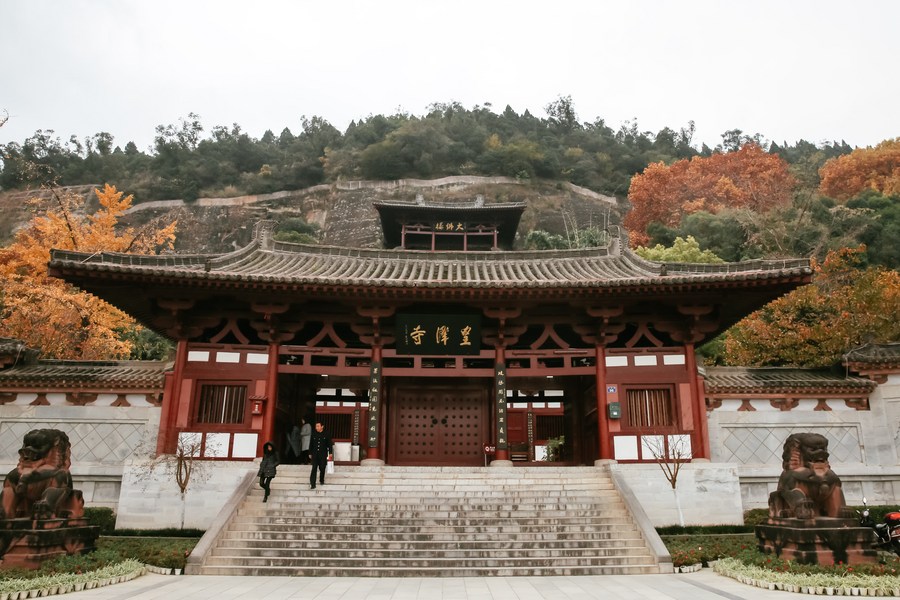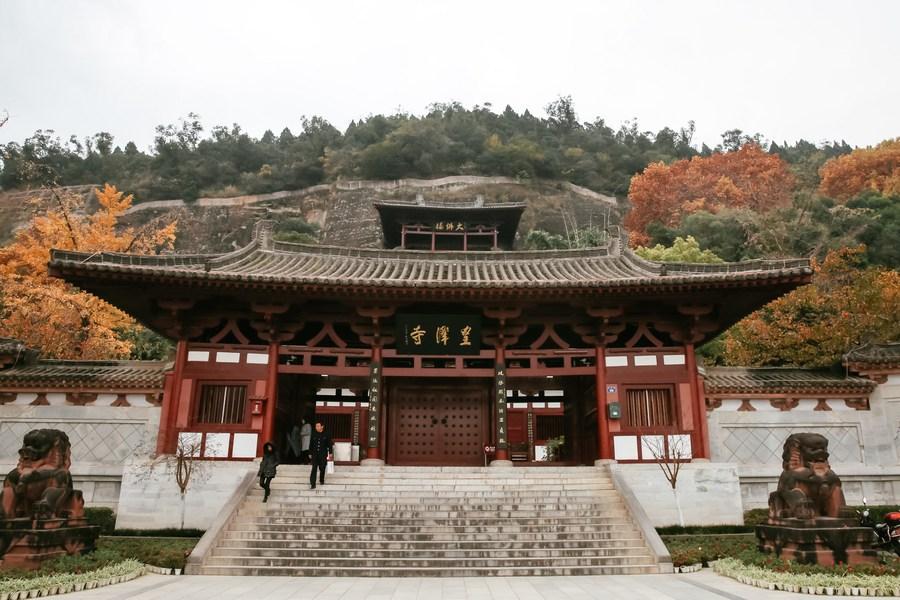
Photo taken on Nov. 24, 2017 shows Huangze Temple scenic spot in Guangyuan City, southwest China's Sichuan Province. (Xinhua/Zhang Cheng)
CHENGDU, Feb. 16 (Xinhua) -- Eighty-three old buildings in southwest China's Sichuan Province can now be visited through scanning QR codes with the help of Virtual Reality (VR) technology, said the cultural relics and archaeology research institute of Chengdu, the provincial capital of Sichuan.
Over 100 historical buildings in Sichuan have been investigated and mapped since 2008. Of these, the VR data of 83 old buildings have been collected.
The ancient architecture center of the institute has reconfirmed or determined the age of 23 historical buildings in Sichuan and generated the thematic database of buildings from the Yuan (1271-1368) and Ming (1368-1644) dynasties in Sichuan. It offers ancient architecture lovers opportunities to have online tours through a virtual platform. It also provides more evidence for academic research.
The Bao'en Temple, located in Pingwu County, is one of the most intact ancient buildings of the Ming Dynasty in China. As soon as visitors scan the corresponding QR code, they will find themselves in the temple square, and the indoor scenes are available for access all around.
"The researchers have preliminarily grasped the characteristics of shape changes of the historical buildings from the Yuan Dynasty to the early Qing Dynasty (1644-1911) in Sichuan. They have come to more accurate judgments on the age of many old buildings," said Yu Shumin, director of the ancient architecture center of the institute.
The first volume of the Sichuan ancient-architecture survey report collection, the first phase of the results of the ancient architecture investigation in Sichuan, has been published, and the second volume will be published this year, according to Yu.
"The number of historical buildings from the Song (960-1279) and Yuan dynasties in Sichuan ranks top in southern China, so the establishment of an ancient architecture database is of great significance," said Yan Jinsong, head of the institute.




 A single purchase
A single purchase









